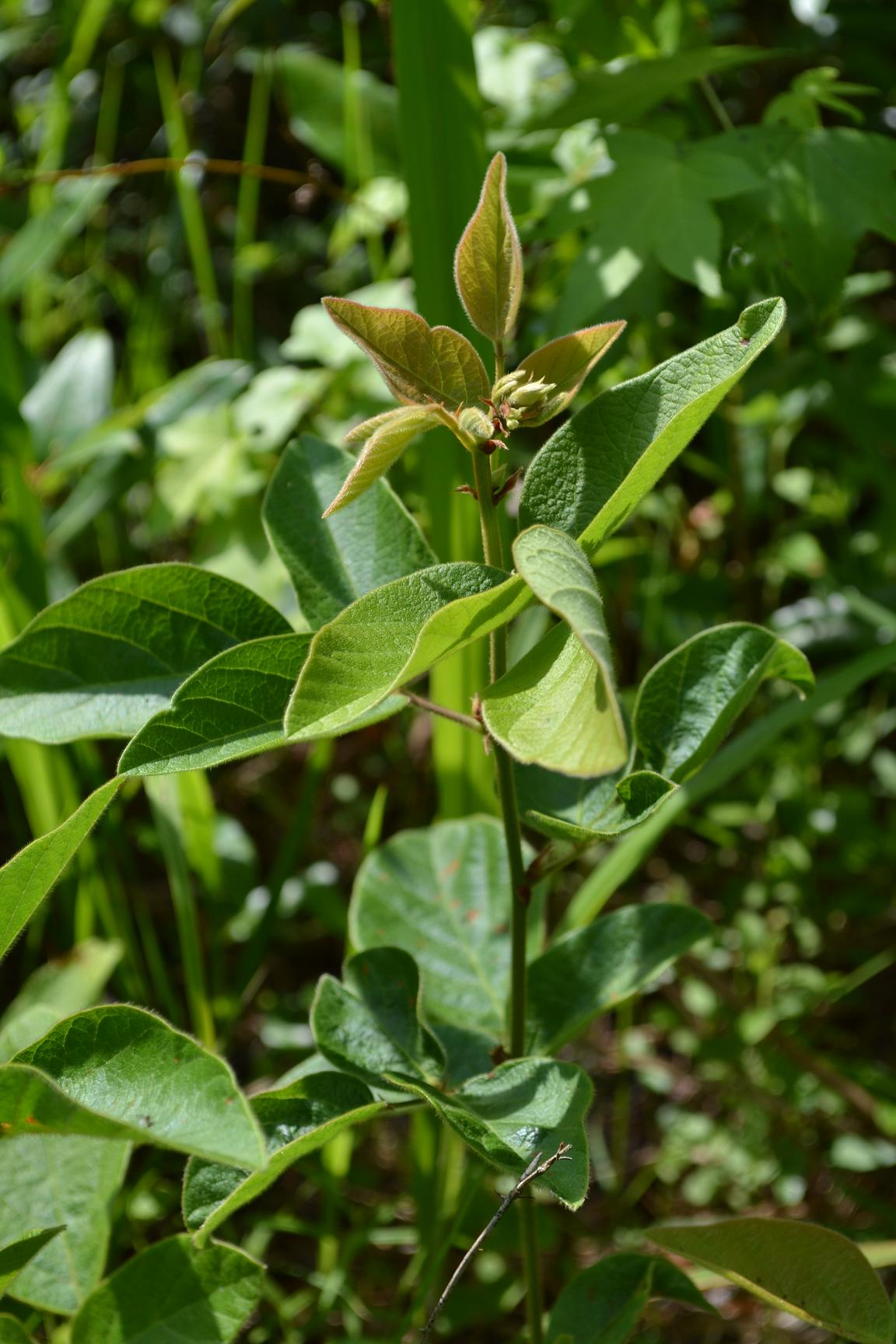Difference between revisions of "Desmodium viridiflorum"
(→References and notes) |
KatieMccoy (talk | contribs) (→References and notes) |
||
| Line 56: | Line 56: | ||
==References and notes== | ==References and notes== | ||
| − | |||
| − | |||
NRCS Plants Database http://plants.usda.gov/java | NRCS Plants Database http://plants.usda.gov/java | ||
Revision as of 10:48, 21 April 2016
| Desmodium viridiflorum | |
|---|---|

| |
| Photo taken by Kevin Robertson | |
| Scientific classification | |
| Kingdom: | Plantae |
| Division: | Magnoliophyta - Flowering plants |
| Class: | Magnoliopsida – Dicotyledons |
| Order: | Fabales |
| Family: | Fabaceae ⁄ Leguminosae |
| Genus: | Desmodium |
| Species: | D. viridiflorum |
| Binomial name | |
| Desmodium viridiflorum (L.) DC. | |

| |
| Natural range of Desmodium viridiflorum from USDA NRCS Plants Database. | |
Common name: velvetleaf ticktrefoil
Contents
Taxonomic notes
Synonym: Meibomia viridiflora (Linnaeus) Kuntze
Description
Generally, for Desmodium genus, they are "annual or perennial herbs, shrubs or small trees. Leaves 1-5 foliolate, pinnately 3-foliolate in ours or rarely the uppermost or lowermost 1-foliolate; leaflets entire, usually stipellate; stipules caduceus to persistent, ovate to subulate, foliaceous to setaceous, often striate. Inflorescence terminal and from the upper axils, paniculate or occasionally racemose; pedicel of each papilionaceous flower subtended by a secondary bract or bractlet, the cluster of 1-few flowers subtended by a primary bract. Calyx slightly to conspicuously 2-lipped, the upper lip scarcely bifid, the lower lip 3-dentate; petals pink, roseate, purple, bluish or white; stamens monadelphous or more commonly diadelphous and then 9 and 1. Legume a stipitate loment, the segments 2-many or rarely solitary, usually flattened and densely uncinated-pubescent, separating into 1-seeded, indehiscent segments." [1]
Specifically, for D. viridiflorum species, they are "erect perennial; stems 0.8-2 m tall, sparsely to densely-puberulent as well as uncinlate-pubescent, occasionally pilose. Terminal leaflets rhombic or deltoid, 3.5-11 cm long, usually 2/3 as wide as long, glabrate to moderately pilose above and densely velvety-tomentose beneath; stipules lance-ovate, acuminate, 3-7 mm long; stipels persistent. Inflorescence paniculate, densely puberulent and uncinlate-pubescent; pedicels 2.5-8 mm long. Calyx sparsely to densely short-pubescent; petals pinkish to rose, 5-9 mm long, 3.5-5 mm broad, straight or somewhat angled above and bluntly angular to somewhat rounded below, moderately to densely uncinulate-pubescent on both sides and sutures; stipe 2.5-6 mm long, considerably longer than calyx tube but shorter than stamina remnants." [1]
Distribution
It is distributed widely throughout the eastern U.S. (NRCS Plants Database).
Ecology
It is a legume with a relatively high nitrogen-fixation rate and acetylene reduction rate.[2]; [3]
Habitat
In the southeastern coastal plain, this species is associated with open, frequently burned longleaf, shortleaf pine-oak-hickory, loblolly pine upland native and old-field communities and open upland hardwood forests (Ultisols) ([3], FSU Herbarium). It occurs in both native areas and in old-field habitats and areas with recent soil disturbance (FSU Herbarium). It is found on loamy sands and sandy loams (FSU Herbarium). Associated species include Desmodium floridanum, D. strictum, D. glabellum, D. paniculatum, and Pinus palustris. (FSU Herbarium).
Phenology
In the southeastern coastal plain it flowers from July-September and fruits July-October (FSU Herbarium).
Seed dispersal
According to Kay Kirkman, a plant ecologist, this species disperses being carried externally by vertebrates. [4]
Fire ecology
According to Hendricks' study, Desmodium viridiflorum was noticeably more abundant in burned plots. [2] In the Oconee National Forest, the plots had a history of no burning, there were 28 individuals (of Desmodium viridiflorum) per ha.[2] In the Piedmont National Wildlife Refuge, the plots were burned in the dormant season (winter) every 4-5 years, there were 2,563 to 3,953 individuals (of Desmodium viridiflorum) per ha.[2] Areas that are burned more frequently are more likely to have established populations of D. viridiflorum and will be persistent and large enough to affect nitrogen availability.[2] In drought conditions, water stress is suggested by Hendricks and that the stress contributes to loss of leaf area, which in turn, reduces the photosynthate available to maintain the high nitrogen fixing rates. [2]
Conservation and Management
Cultivation and restoration
Photo Gallery
References and notes
NRCS Plants Database http://plants.usda.gov/java
- ↑ 1.0 1.1 Radford, Albert E., Harry E. Ahles, and C. Ritchie Bell. Manual of the Vascular Flora of the Carolinas. 1964, 1968. The University of North Carolina Press. 604-11. Print.
- ↑ 2.0 2.1 2.2 2.3 2.4 2.5 Hendricks, J. J. and L. R. Boring (1999). "N2-fixation by native herbaceous legumes in burned pine ecosystems of the southeastern United States." Forest Ecology and Management 113: 167-177.
- ↑ 3.0 3.1 Lajeunesse, S. D., J. J. Dilustro, et al. (2006). "Ground layer carbon and nitrogen cycling and legume nitrogen inputs following fire in mixed pine forests." American Journal of Botany 93: 84-93.
- ↑ Kay Kirkman, unpublished data, 2015.